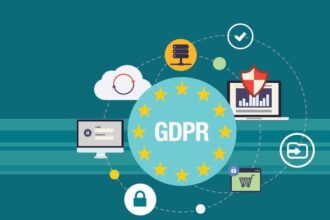Hospitals that detect earthquakes and inform administrators if they need to evacuate patients. Cars that assess and report the severity of crashes automatically to emergency responders so victims can get help faster. These are just some of the innovative ways the Internet of Things creates economic and social value.
Hospitals that detect earthquakes and inform administrators if they need to evacuate patients. Cars that assess and report the severity of crashes automatically to emergency responders so victims can get help faster. These are just some of the innovative ways the Internet of Things creates economic and social value. While the Internet of Things will surely bring remarkable new products and services, the bulk of the benefits of a connected world will come from the networking and sensorization of everyday objects and processes. Many of these changes are happening today as the private sector increasingly uses connected devices for purposes that are sometimes unexpected, but are hardly fantastical. Policymakers and government officials should look to these examples to identify areas where similar kinds of incremental innovation would improve how the public sector operates. Should the public sector view the Internet of Things in this light—as a practical tool that can develop incrementally, rather than a collection of futuristic gadgets—it is more likely to embrace the Internet of Things as an early adopter and start enjoying its benefits.
The Internet of Things is increasingly becoming integral to many industries. Consider the following examples:
- The Internet of Things is giving rise to the era of “Agriculture 3.0” in which farmers make decisions about what crops to plant, and when and where to plant them based on analysis of sensor data, weather data, and other factors. Data-driven farming not only helps increase yields and and reduce expenses for farmers, but also makes for more efficient, targeted use of irrigation systems, which currently waste up to 50 percent of the water they use. Farmers have been able to double production since the 1950s through modern techniques such as nitrogen supplementation and mechanized planting. However, by 2050, feeding the estimated 9.5 billion people on Earth will require an additional 70 percent increase in production—output levels that simply cannot be met by building bigger farms or developing better watering techniques. The Internet of Things—and the data it generates—is one of the agriculture industry’s best bets to overcome this challenge, allowing farmers to increase yields while using less resources.
- Airplane assembly lines, unlike car manufacturing plants, traditionally rely more on humans rather than automated systems. But, rather than having its workers turn screws and install bolts manually, European airplane manufacturer Airbus has equipped its workers with scanners that can, for example, scan a hole in an airplane’s exterior, identify the exact type of screw necessary, and transmit data about the exact depth, torque, and angle required to a robotic screwdriver to complete the task.
- Restaurants can use the Internet of Things to ensure they never make a burrito that skimps on ingredients with data-driven quality control. By attaching weight sensors to spoons, restaurant managers could monitor in real time whether not their employees are adding enough of an ingredient to a customer’s order, track an employee’s productivity, and potentially even build real-time calorie counts for different orders.
As the costs of connected devices continues to decline, the Internet of Things will continue to expand. Many of the technologies in these examples either did not exist or were prohibitively expensive just a decade ago. Yet today farmers are increasingly using data-driven precision agriculture techniques to increase global food production, and factories around the world are connecting tools and machinery to improve efficiency. The Internet of Things will be transformative, to be sure, but it will happen one step at a time—with networked spoons in a restaraunt long before the restaurant is entirely automated. Public sector officials, perhaps reluctant to take on ambitious and potentially costly technology investments, should adopt an approach similar to the private sector and identify specific areas where agencies can incorporate the Internet of Things to advance their mission. The success these early adopters exhibit should help pave the way for an increasingly connected, data-driven, and effective government.









